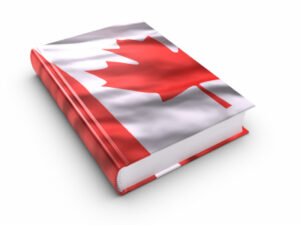Canada is made up of thirteen provinces and territories that have each developed their own education system and institutions. There are similarities and differences between these thirteen education systems but, on the whole, they are comparable. All systems have the same goals of providing equal access to all Canadians and maintaining uniform education resources across all provinces and territories, no matter where an individual lives.
Compulsory schooling varies from one jurisdiction to another, however the majority have compulsory attendance laws from age six or seven to age sixteen. There are twelve grades in the Canadian primary and secondary school system and they are arranged in several different ways. Overall, primary school ranges from 1st-8th grade, middle (junior high) school ranges from 6th-9th grade though not all jurisdictions have it, and secondary (senior high) school ranges from 7th-12th grade
Grading scales in Canada also vary from one jurisdiction to another. At both the secondary and postsecondary levels there are no standard grading systems that are used, though most institutions use some variation of an alphabetical (A, B, C, D, F) or numerical (0-100) grading scale. There can also be a description of excellent, good, satisfactory, poor, or fail that accompanies the letter or number grade. Postsecondary institutions will usually attach the grading scale that they use to the transcript.
There are two official languages in Canada, French and English, meaning that each province and territory provides both English-language and French-language schools to the public. There is no national curriculum and the required subjects vary from jurisdiction to jurisdiction, however some subjects include: first-language studies (usually English or French), mathematics, science, arts, social studies, physical education, religious or moral instruction, second language instruction, home economics, health, and computers.
Higher education is available in Canada at public and private institutions. For all institutions except for the University of Montreal the primary language of instruction is English, though many courses are offered in French as well. The Association of Universities and Colleges of Canada (AUCC) oversees institutions of higher education in Canada although there is no national accrediting body. There are currently 387 colleges, universities, and technical institutes per the Chronicle of Higher Education.
The first credential that is usually awarded in Canada is for the completion of secondary school. This credential has different names depending on the territory or province in which it was awarded ranging from the General or Advanced High School Diploma (Alberta) to the Secondary School Graduation Diploma (British Columbia). For postsecondary studies, the most awarded credentials are the (Honours) Bachelor’s Degree, awarded after 3-4 years of postsecondary study and the Diploma, awarded after 1-3 years of postsecondary study.
© 2025 Gaetranslations | Terms & Conditions
Website by: Timefortheweb